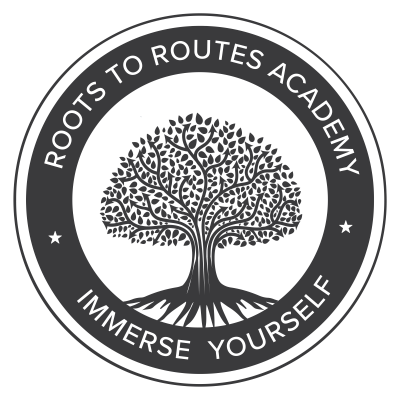Is Ontario’s Guidance Counseling System No Good For Black Students?
April 16, 2025

Guidance counseling is meant to be a bridge between students and their futures, a safe space for them to discuss career paths, solve academic challenges, and access supportive resources.
But for many Black students in Ontario, that bridge feels incomplete, riddled with gaps that leave them stranded. This isn’t about isolated missteps; it’s about systemic flaws ingrained in a system that struggles to serve marginalized communities.
To understand this, we decided to look closely at how Ontario’s guidance counseling operates, and who it’s truly designed for.
You’d be surprised at what we discovered.
1. The Promise vs. The Reality of School Counseling
In theory, guidance counselors are student advocates. They help students choose courses, apply to post-secondary programs, and resolve personal hurdles. However, in practice, the system often falls short for Black youth.
Consider the numbers: While Black students make up a significant portion of Ontario’s urban school populations, they’re frequently underrepresented in advanced placement (AP) courses and overrepresented in disciplinary actions.
This obvious difference isn’t accidental. Studies, like this one by Roots to Routes Academy, reveal that Black students are less likely to receive proactive counseling about university pathways compared to their white peers.
Why does this happen? For starters, counselor-to-student ratios in Ontario are strained, averaging 1:391 in many schools. Overworked counselors have little time for individualized support, leading to rushed meetings and generic advice.
But workload alone doesn’t explain the racial inequity. A deeper issue lies in who occupies these roles. According to the Ontario College of Teachers, less than 10% of educators, including counselors, identify as Black, Indigenous, or racialized. When students rarely see themselves reflected in the adults guiding them, trust disappears.
For example, we’ve seen a scenario of a Grade 10 Black student who, during a counseling session about course selection, mentioned her interest in engineering. Instead of encouragement, her counselor warned her that math “might be too heavy a load” and suggested she consider “something less stressful.” This student later learned that this counselor had steered several Black students away from STEM courses, assuming they’d struggle. Stories like hers aren’t outliers; they’re symptoms of implicit racial bias shaping decisions that alter futures.
Research also shows that Black students in Ontario are often steered away from STEM fields due to implicit biases. In interviews, students describe counselors warning them that STEM paths are “too demanding” or suggesting alternatives like vocational training instead of university prep. This advice is rarely given to non-Black students with similar academic records.
This pattern isn’t hypothetical. Advocacy groups, including the Ontario Black History Society, have documented cases where Black youth were actively discouraged from pursuing careers in engineering, medicine, or tech fields where representation remains critically low. As one anonymous student noted in a 2023 Toronto District School Board survey: “I was told to ‘play it safe’ instead of aiming for my dream program. Later, I found out my white friend with lower grades got pushed to apply.”
These stories reflect a broader trend: systemic assumptions about who belongs in certain careers, rooted in stereotypes rather than individual potential.
2. The Subtle Exclusion
Guidance counseling isn’t just about logistics, it’s about validation. When Black students walk into an office and face someone unfamiliar with their cultural context, it sometimes sends a subtle message: “Your identity is a complication here”. For example, many Black students juggle responsibilities like part-time jobs or family caregiving, which can impact their availability for extracurriculars or study time. Yet counselors often interpret these challenges as a lack of commitment rather than systemic barriers.
Cultural misunderstandings run deeper. A student seeking mental health support might hesitate to disclose struggles if their counselor dismisses racialized trauma as “drama.”
Others avoid discussing career goals tied to social justice or community advocacy, fearing they’ll be labeled as “too political.” This disconnect isn’t just frustrating; it silences black students’ voices and destroys their aspirations.
Then there’s the issue of access. Scholarships for Black youth, mentorship programs, and internships often exist, but these students rarely hear about them through school channels.
According to CBC News, a significant number of Black high school students are not informed about STEM scholarships, a challenge linked to broader systemic barriers in educational outreach. Without advocates in their corner, many miss out on opportunities that could level the playing field.
3. The Result of Inadequate Support and Missed Opportunities
The consequences of these gaps are both immediate and long-term. Students who feel unsupported academically may become inactive, leading to lower grades or higher dropout rates.
Emotionally, the toll is heavier. Constantly defending your worth in spaces that undervalue you causes burnout, a phenomenon researchers call “racial battle fatigue.” Over time, this erodes confidence, making black students question whether they belong in higher education or competitive careers.
But the impact extends even beyond the individuals. When Black students are systematically underserved, entire communities lose out on future leaders, innovators, and changemakers. Universities and employers, too, miss the chance to diversify their ranks, repeating the cycles of exclusion.
Roots to Routes Academy: The Community-Driven Solution
After over 400 words of discussing systemic issues, it’s become clear that Ontario’s guidance system falls short for Black students and the Black community as a whole.
That’s where grassroots initiatives like Roots to Routes Academy come in. Founded by Black educators, the academy wasn’t created to “fix” black students but to fix the broken systems around them.
Roots to Routes Academy operates on a simple truth: “Support should empower, not erase”. Our mentors, many of whom are Black or racialized, prioritize culturally responsive guidance over the more common, traditionally exclusive guidance.
For instance, when students show interest in careers like social work or education, our mentors connect them with professionals who share their backgrounds, proving that these paths are attainable.
But perhaps most importantly, Roots to Routes Academy fills this information gap. We maintain partnerships with organizations to ensure students know about scholarships, internships, and mentorship programs tailored to them.
What You Need to Know
Ontario’s guidance counseling crisis isn’t unsolvable. It requires schools to hire diverse counselors, train staff on anti-racism, and audit their support systems for racial and other biases.
Students and families, meanwhile, deserve to know that alternatives exist. Academies like Roots to Routes Academy aren’t just supplements; they’re proof that when systems fail, the community can pick up the slack.
The lesson here isn’t about blaming individual counselors. It’s about recognizing that equity isn’t a checkbox, it’s a commitment to rebuilding systems so every student, regardless of race, sees their future as something to nurture, not negotiate.
![]()
Related Posts
1 comment
We’re So Glad You Made It Here
We know you might still have a few questions or concerns and that’s completely okay. We’re here to listen, to support, and to make sure you have all the information you need.
If something’s on your mind, don’t hesitate to reach out. Just send us a quick message, we’re happy to help.
Once you do, a member of our team will get back to you shortly and you’ll also start receiving our free, value-packed newsletters filled with tips, resources, and insights to support your child’s learning journey.



the system needs to do better for black folks!